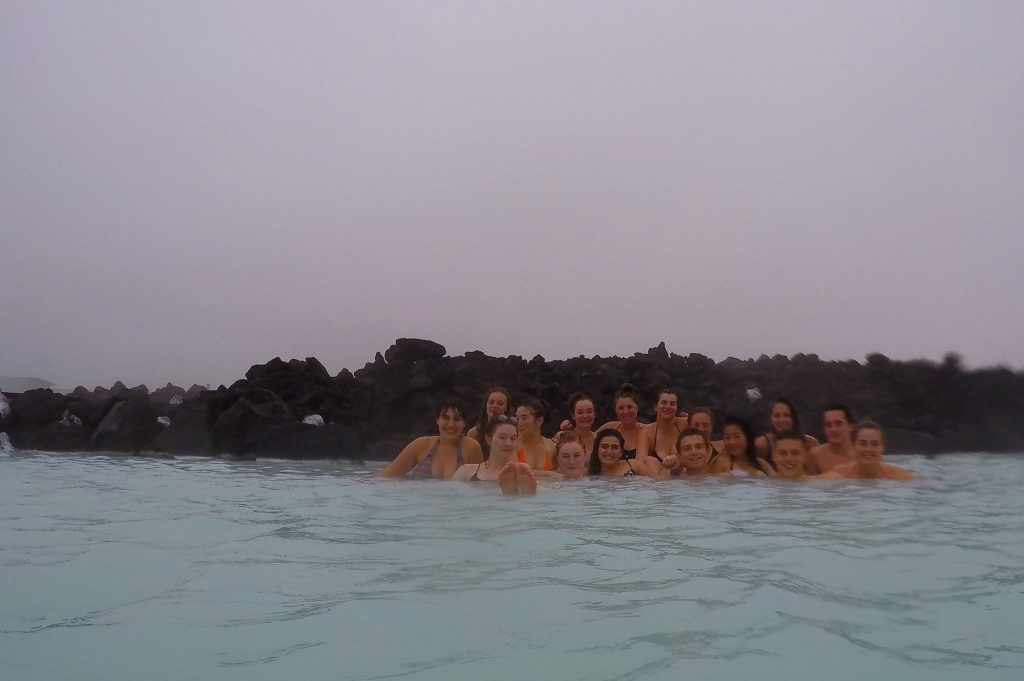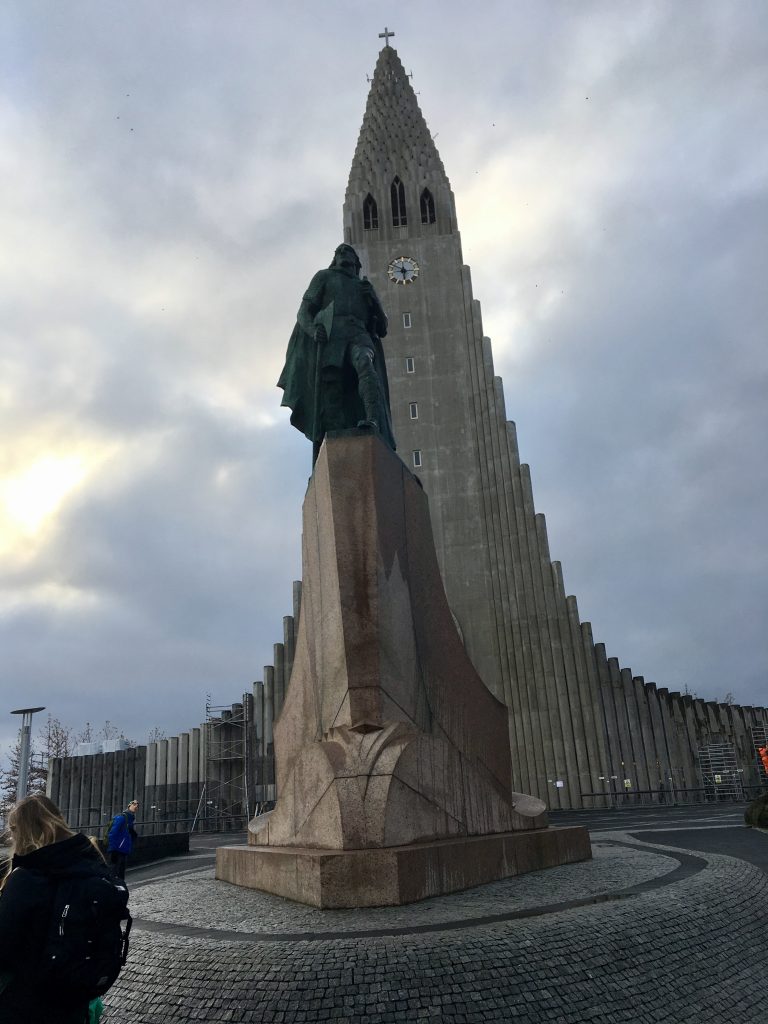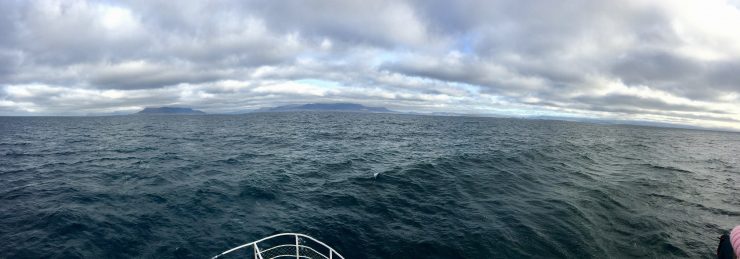The focus of my course of study here in Denmark is on glaciers and the impacts of climate change on the Arctic. Denmark has not had any glaciers since the last glacial period so in order to get a fist hand look at the glaciers we are studying, my professor took us to Iceland for the week! We arrived in Reykjavik, the capital, on a cold and rainy Sunday morning. Little did we know that this cold and rain would persist throughout the week, leaving Iceland with a record-breaking level of rainfall. On the way into the city my class stopped at the Blue Lagoon, an environmental disaster turned tourist attraction. The lagoon is situated on top of the Grindavik lava field. In 1976 the large pools formed because of the wastewater from the geothermal power plant that had recently been constructed nearby. The silica and sulfur rich waters have been popularized for their warm spa-like pools and so-called healing abilities. The picture below is of my class (people from universities all over the US) bathing in the lagoon.
 After taking a dip in the pools, we headed into Reykjavik. The city is credited with being the first Icelandic settlement by the Vikings in the year 874 AD. In 1786 the city was established as an official trading town and has grown ever since. We spent the evening exploring the city and uncovering various historical landmarks. The next day our actual adventure was set to begin. We started at the university where we were given an introduction to Iceland’s geography and geology. Iceland is a country made up of magma deposits that have been excreted from the Mid-Atlantic ridge that runs through the country. This ridge is the reason for the high amount of volcanic activity in the country. Over thousands of years, as more and more magma surfaces as the divergent plates spread apart, more and more land was formed and Iceland came to be. Then we headed out and prepared for our next stop: whale watching.
After taking a dip in the pools, we headed into Reykjavik. The city is credited with being the first Icelandic settlement by the Vikings in the year 874 AD. In 1786 the city was established as an official trading town and has grown ever since. We spent the evening exploring the city and uncovering various historical landmarks. The next day our actual adventure was set to begin. We started at the university where we were given an introduction to Iceland’s geography and geology. Iceland is a country made up of magma deposits that have been excreted from the Mid-Atlantic ridge that runs through the country. This ridge is the reason for the high amount of volcanic activity in the country. Over thousands of years, as more and more magma surfaces as the divergent plates spread apart, more and more land was formed and Iceland came to be. Then we headed out and prepared for our next stop: whale watching.
Our co professor, a biologist who specializes in marine mammals, organized a whale-watching excursion to get a first-hand look at some arctic species. Despite heavy rain and high seas, we boarded the vessel and prepared ourselves for a fascinating four-hour adventure. Over the next few hours we would follow what we determined to be four different humpback whales. The first two were rather shy and we did not see much of them before they disappeared. Just as we were about to call it a day however, we ran into two individuals swimming together. We were unsure of what they were doing, but we experienced them jumping in and out of the water. It was truly a sight to behold. After we departed the vessel, we were given a quick lesson about Iceland and whaling. Iceland is one of the few remaining countries in which whaling is legal. Directly next to the vessels intended to take guests out to view these beautiful creatures were the ships mounted with harpoons with an intent to kill them. That brought an end to our days spent in Reykjavik. We were off on our journey down the Icelandic Route 1, to explore the unique geology and glaciology that Iceland has to offer.

